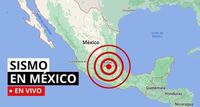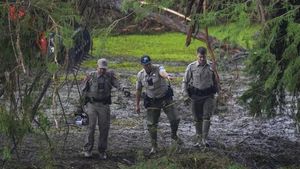Mexico, a country renowned for its rich cultural heritage and vibrant landscapes, is also one of the most seismically active nations in the world. Nestled within the infamous 'Ring of Fire,' Mexico experiences a significant number of earthquakes each year, raising concerns about safety and preparedness among its citizens.
According to the Servicio Sismológico Nacional, Mexico is situated on the North American Plate, bordered by the Cocos, Rivera, and Pacific plates to the south and west. This geographical positioning places the country at the intersection of five tectonic plates: the Caribbean, North America, Pacific, Rivera, and Cocos. The constant interaction among these plates results in a high seismicity zone, making Mexico susceptible to frequent and sometimes powerful earthquakes.
Statistics reveal that Mexico records over 90 earthquakes annually that exceed a magnitude of 4 on the Richter scale. Remarkably, this accounts for approximately 60% of all seismic activity recorded worldwide. The implications of this seismic activity are profound, particularly for densely populated areas such as Mexico City, where the risk of significant earthquakes poses a constant threat.
The states most at risk of experiencing major earthquakes that could impact Mexico City include Jalisco, Colima, Michoacán, Guerrero, Oaxaca, Puebla, Estado de México, and Veracruz. Each of these regions has a history of seismic events, and the potential for future earthquakes remains a pressing concern for both residents and local authorities.
In light of this reality, disaster preparedness has become a crucial aspect of life in Mexico. Authorities and organizations emphasize the importance of being equipped for emergencies, especially in urban areas where the population density exacerbates the risks associated with seismic events. Recommendations for emergency preparedness often include having a well-stocked emergency backpack, which should contain essential supplies such as water, food, first-aid kits, flashlights, and important documents.
The government and various organizations have also initiated awareness campaigns to educate the public about earthquake safety measures. These initiatives encourage individuals to develop emergency plans, conduct regular drills, and stay informed about seismic activity through reliable sources. The goal is to foster a culture of preparedness that empowers citizens to respond effectively in the event of an earthquake.
Furthermore, advancements in technology have enabled better monitoring and early warning systems for seismic activity. These systems aim to provide timely alerts to residents, allowing them to take necessary precautions before an earthquake strikes. While no system can predict earthquakes with absolute certainty, improvements in monitoring technology have enhanced Mexico's ability to respond to seismic threats.
Despite these efforts, challenges remain. Many regions still lack adequate infrastructure to withstand significant earthquakes, and there is a pressing need for investment in disaster-resistant buildings and public facilities. Urban planning must also consider the seismic risks inherent to the region, ensuring that new developments adhere to strict safety standards.
In conclusion, while Mexico's geographical positioning makes it a hotspot for seismic activity, the country's commitment to disaster preparedness and public safety is evident. Through education, technological advancements, and community engagement, Mexico aims to mitigate the risks associated with earthquakes and protect its citizens from the potential devastation of seismic events.





